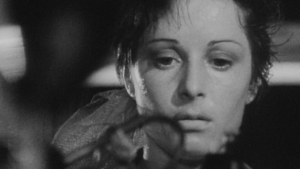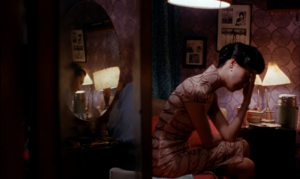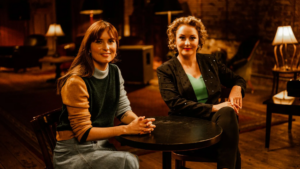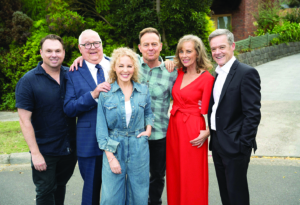While virtual reality (VR) has existed for many years, cinematic VR – or 360-degree filmmaking – is an emerging medium. Major international film festivals, such as Tribeca, Sundance and Cannes, are now programming VR short films or ‘experiences’ for viewing on head-mounted displays (HMDs).
This year, the Sydney Film Festival (SFF) expanded its VR short film program. Compared to the 2016 festival, where patrons casually queued to watch free VR films as a novelty, 2017’s VR screenings were organised into sessions with set times, requiring tickets. The VR programs, up from nine to thirteen films, were mostly sold out – and, with a ticket costing around A$20 for only half the running time of a feature film, this was a strong indicator of the emerging format’s popularity.
Despite now charging for tickets, the festival’s organisers had not significantly upgraded the VR-screening environment from 2016. On the plus side, comfortable swivel seats allowed for easy ‘look around’ viewing. Once again, however, the VR viewing space was located near the bar in the Hub at the Sydney Town Hall, where there was music playing, loud chatter and VR coordinators racing around to assist viewers with their HMDs. VR is often touted as an immersive environment, but it’s very hard to ‘transport yourself’ (as the 2017 SFF film guide put it) with so many distractions.
Nevertheless, the films were of a high quality, and the diversity of the programming demonstrated VR filmmakers’ ongoing exploration of genre, style and content. There were experimental animations, such as Only at the Air, Only at Each Other (Greg Ferris, 2017), Orbital Vanitas (Shaun Gladwell, 2017) and The Turning Forest (Oscar Raby, 2016), in which the viewer could ‘play’ musical notes; surreal urban adventures, as in The Other Dakar (Selly Raby Kane, 2017); and more traditional narratives, like Miyubi (Félix Lajeunesse & Paul Raphaël, 2017), and documentaries, such as the New York Times production Under a Cracked Sky (2017). The films were viewed individually on Samsung Gear HMDs, with the exception of Life of Us (Chris Milk & Aaron Koblin, 2017), which was viewed on HTC’s Vive. Life of Us offers more of a game-oriented experience, with two viewers able to communicate and interact using handheld controllers.
For filmmakers, working in a 360-degree space presents challenges concerning form, particularly during editing, as the viewer has complete agency to look anywhere within the film ‘space’ at any time. And, while traditional ‘flat screen’ elements – sound cues, light, colour, staging and ‘framing’ (that is, limiting the plane of action) – can be used in VR to direct the viewer’s focus to a specific point, edits within scenes can nonetheless be jarring or cause disorientation.
For this reason, many 360-degree films are solely one-shot, as was the case in Orbital Vanitas and Sergeant James (Alexandre Perez, 2017). Ashes to Ashes (Ingejan Ligthart Schenk et al., 2016), a dark melodrama set in a TV studio, was also made in a single shot, but the filmmakers create scene transitions by floating the set’s walls and moving the camera on a dolly through the studio space. In contrast, Miyubi has one shot per scene. Here, scenes dissolve rather than cut, allowing time for the viewer to find the focal point in the new scenario, and using the device of its central character, the titular 1980s robot, running out of battery or having system errors to transition between scenes. And, in I, Philip (Pierre Zandrowicz, 2016), dissolves take the form of translucent bricks, which also help illustrate the central android character’s shift between actuality and memory.
On the other hand, The Other Dakar uses frequent cuts within scenes (often seemingly ‘down the line’ – from a wide shot to a close-up of the central figure), which suits its magic-realist aesthetic and loosely plotted explorative journey. Documentaries Once Upon a Time in the Western Suburbs (Gideon Obarzanek & Matthew Bate, 2017) and Under a Cracked Sky also have frequent cuts, which are occasionally abrupt but generally unproblematic. Perhaps it was because these films followed numerous characters, or had a multifocal approach, that I didn’t find the cuts so jarring.
Another area of experimentation in the VR arena is perspective, particularly how directorial choices – such as camera height, breaking the fourth wall and camera movement – can affect the viewer’s positioning as an active participant in the narrative. In Miyubi, the camera takes the position of the eponymous robot. You perceive your robot body around you, characters address the camera/robot/you, and – as the children’s pet, or as confidante for the war-veteran grandparent – you become immersed in the concerns of the film’s central family. I, Philip is shot from the perspective of the android, which speaks but doesn’t seem to have a body. In Ashes to Ashes, the camera takes the perspective of an urn holding the ashes of the family’s grandfather. The ashes are the focus of a domestic wrangle, and are frequently addressed by the other characters; at the film’s climax, a bomb’s fuse is lit in front of you, creating an eerie sensation: you know it can’t hurt, but instinctively you want to run.
Finally, Extravaganza (Ethan Shaftel, 2017), a blend of animation and live action, positions you as a figurine in a repugnant music-box puppet show. The violent performance depicts a soldier, in various guises, decapitating the aliens or Native Americans surrounding you. As a further complication, it’s actually a film within a film: the music box is being demonstrated as a new medium – a VR film viewed via a HMD – which, as a poke at pioneer VR filmmaker Chris Milk, is described as an ‘empathy machine’. Extravaganza explores how new technology can perpetuate old stereotypes and, while it’s a little clumsy in its satire, it is nevertheless a visually compelling throwback to the carnival attractions of the not-so-distant past.
The VR films screened at SFF 2017 show our growing interest in the medium as well as the development and evolution of cinematic craft as a whole. With the costs involved in VR production and viewing in decline, I expect that VR will become increasingly popular at future festivals and move on from its current ‘sidebar’ status.





